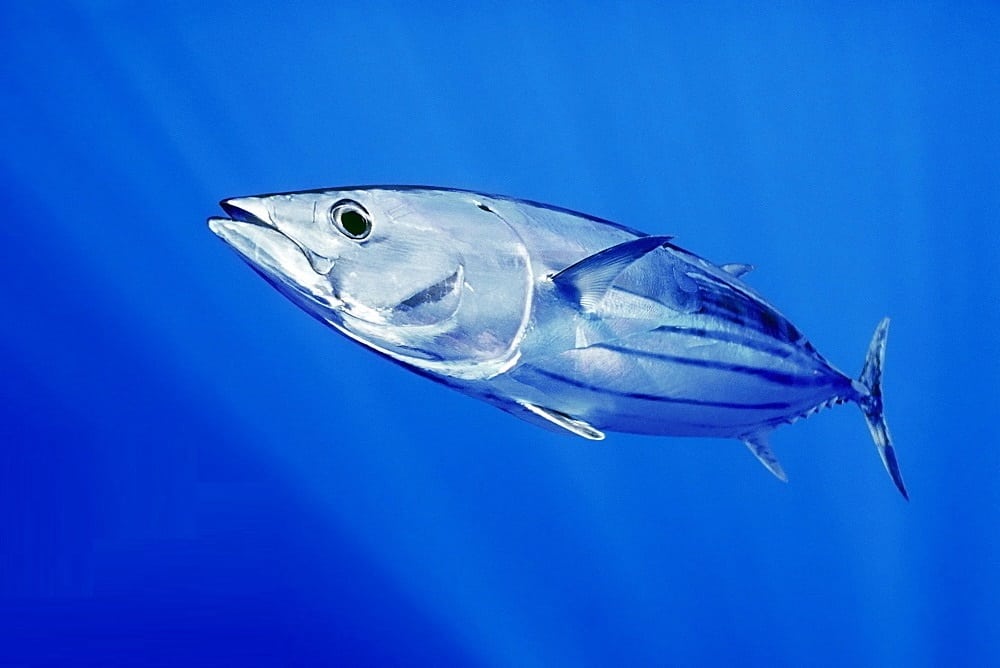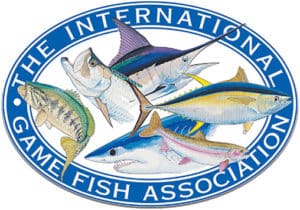Contact us if your target is Skipjack in Costa Rica
See our Skipjack Tuna Photo Gallery

Skipjack Tuna/Bonito
In the North Pacific coast it can be found every month of the year, the Skipjack have torpedo-shaped bodies with dark blue or purple backs, and silver on the lower sides and belly. They have 3-5 prominent dark bands running along the length of the lower sides. Skipjack tuna are mostly scaleless.
Characteristics of the Skipjack
Skipjack are the smallest and most abundant of the major commercial tuna species. They have a streamlined body that is mostly without scales. Their backs are dark purple-blue and their lower sides and bellies are silver with four to six dark bands. Skipjack can live as long as eight to 10 years.
Where to find a Skipjack in Costa Rica?
Skipjack tuna are widespread throughout the tropical waters of the Costa Rica. Skipjack tuna are highly migratory and travel long distances. They are a pelagic species that can be found to depths of 260 metres. Skipjack tuna tend to school by size. Schools are often associated with albacore or yellowfin tuna, and sometimes with whales or whale sharks. Schools may also occur in association with floating objects. Juveniles are generally found in surface waters and move into deeper water as they mature
Why fishing Skipjack in Costa Rica?
Costa Rica is really conducive to the capture of this coveted species because it has a wealth of natural resources and is considered one of the best environments for many other species.
The population of this fish is very large in the Costa Rican sea areas. The warm waters of this maritime area make the country’s coasts a perfect place for sport fishing of this species.
Important notes about the Skipjack
On the feeding of the Skipjack, due to its speed of movement, they can be allowed to hunt a great variety of species of different sizes.
Methods for catching Skipjack
They can be fished with different techniques such as:
Bottom Fishing Inshore/Offshore
Bottom fishing is the go-to technique for countless anglers out there, and it’s easy to see why. Known for its fun, action-packed outings, it can produce catches of pretty much any size., bottom fishing involves lowering a weighted hook or lure to the bottom of the water column. Sounds simple enough, right? But there’s a bit more to it than that.
One of the things that makes bottom fishing so addictive is the fact that you can practice it in an endless number of ways. Depending on the water you’re fishing, and what you want to catch, you can choose from a number of fishing styles. You can use different bait and tackle, and play around with different presentations.
Trolling
This may be the most frequent because of the small boats that move around the roosterfish fishing areas. It is true that fishing for rooster fish with this modality presents a little less emotion than the previous one, but it is the most effective. With this technique we can find areas where the active specimens are located, where we can then apply other more lively fishing methods. You can also do bottom fishing at the points where we find the active fish.




